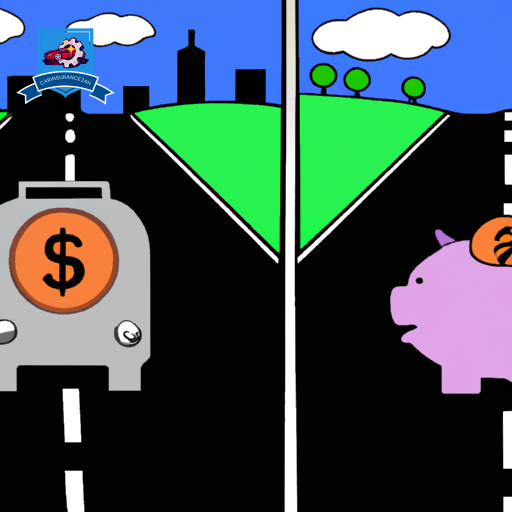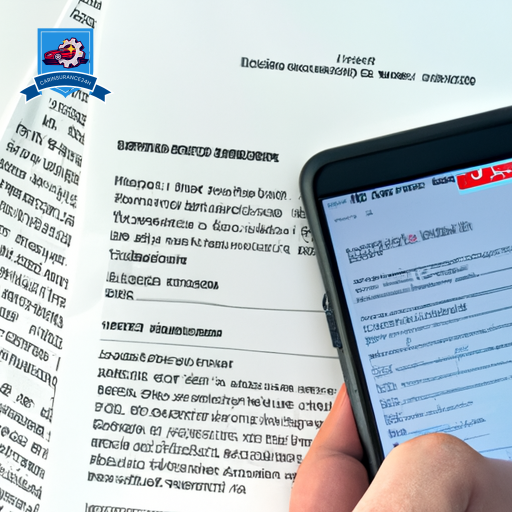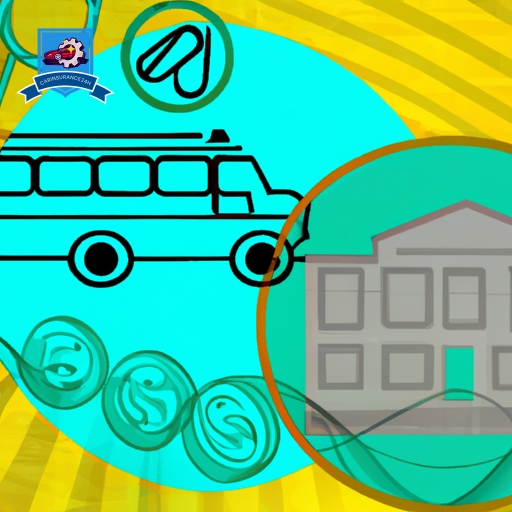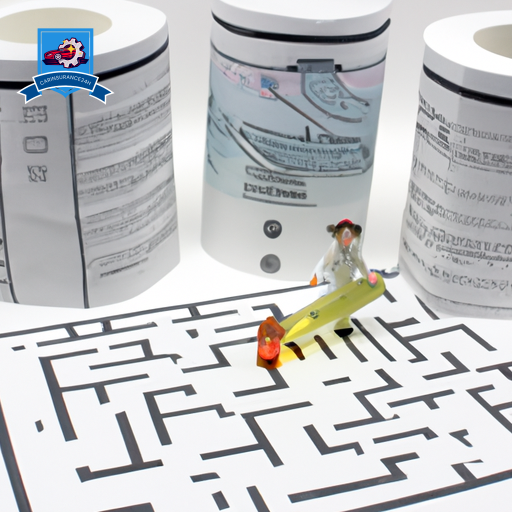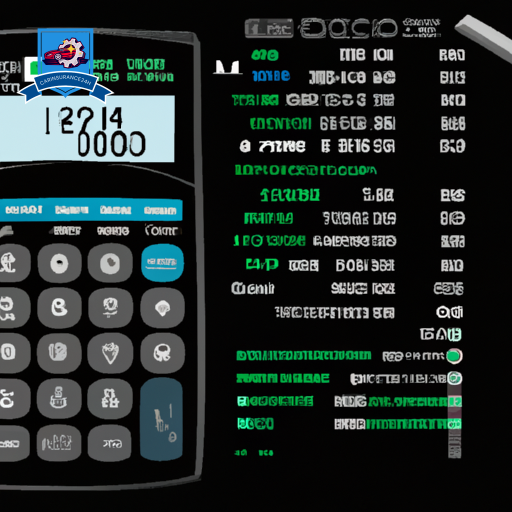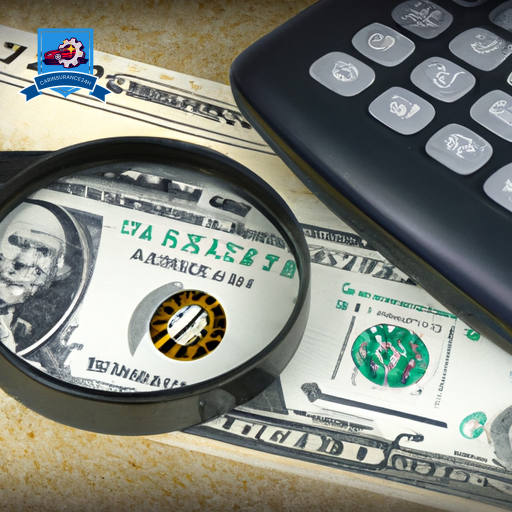In the evolving landscape of automobile insurance, the pay-per-mile model has emerged as a compelling alternative for drivers whose vehicular usage does not justify traditional annual premiums. This insurance paradigm, which charges policyholders based on the actual distance driven, merits consideration by those seeking cost-effective coverage tailored to their specific driving habits.
However, determining whether the pay-per-mile model aligns with one’s personal circumstances necessitates a nuanced understanding of its benefits and limitations. As we unpack the intricacies of this insurance approach, key factors such as driving frequency, financial implications, and coverage adequacy come into play, inviting a thoughtful exploration into whether it represents a prudent choice for your automotive insurance needs.
Understanding Pay-Per-Mile Insurance
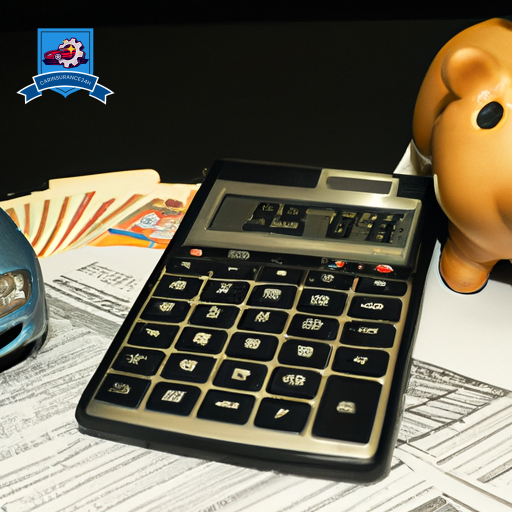
Pay-per-mile insurance, an innovative approach to automotive coverage, charges drivers based on the actual distance they travel, offering a potentially cost-effective solution for low-mileage drivers. This insurance model diverges from traditional flat-rate premiums by introducing a variable component that directly correlates to the number of miles driven. The fundamental premise is straightforward: the less you drive, the less you pay.
The implementation of pay-per-mile insurance hinges on metering accuracy. Insurers typically use a telematics device installed in the vehicle to track mileage accurately. This device not only records the distance traveled but also transmits the data back to the insurer, ensuring that billing is precise and reflective of actual usage. The accuracy of these devices is critical, as it directly impacts the fairness and transparency of billing. Discrepancies in metering could lead to disputes or dissatisfaction, underscoring the importance of reliable technology in this insurance model.
Understanding coverage limits is essential when considering pay-per-mile insurance. While the premiums are variable, the coverage provided mirrors that of traditional insurance policies, offering protection against a range of incidents from accidents to theft. However, policyholders must be cognizant of their policy’s specific terms and limits. For instance, some policies might have a cap on the number of miles covered, beyond which the per-mile rate could increase or coverage could change. Being informed about these parameters allows drivers to make educated decisions about whether pay-per-mile insurance aligns with their needs and driving habits.
Evaluating Your Driving Habits

Understanding your driving habits is a pivotal step in determining whether pay-per-mile insurance is a suitable option for you. This type of insurance can be particularly advantageous or disadvantageous depending on several factors related to how, when, and why you drive. Evaluating your driving habits requires you to take into account not only the frequency of your trips but also the nature of your vehicle usage, which can have a considerable impact on your insurance premiums under a pay-per-mile model.
To accurately assess whether this insurance model aligns with your driving lifestyle, contemplate the following aspects:
-
Average Daily or Weekly Mileage: Calculate your typical mileage over a set period. Individuals who drive less, perhaps working from home or living in urban areas with ample public transportation, may find pay-per-mile insurance to be cost-effective.
-
Seasonal Driving Patterns: Your driving habits might fluctuate with the seasons, such as increased travel during summer holidays or reduced driving in winter. Recognizing these patterns can help you anticipate how your insurance costs might vary throughout the year.
-
Purpose of Vehicle Use: Whether your vehicle is primarily for personal use, commuting, or business can influence your decision. Pay-per-mile insurance often benefits those who use their vehicle less for daily commuting and more for occasional outings.
-
Vehicle Type: The type of vehicle you drive can also play a role. Owners of high-performance or luxury vehicles, which may incur higher per-mile charges, should weigh the costs against traditional insurance plans.
Pros of Pay-Per-Mile Insurance
Exploring the advantages of pay-per-mile insurance reveals significant benefits for drivers. Primarily, it offers the opportunity to lower insurance costs for those who drive less, providing a cost-effective solution for infrequent drivers.
Moreover, it allows insurance premiums to be tailored to individual driving habits, while also serving as a financial incentive to reduce driving frequency, promoting environmental sustainability and potentially reducing traffic congestion.
Lowers Costs for Less Driving
For drivers who log fewer miles, adopting a pay-per-mile car insurance policy can greatly reduce their insurance costs. This approach acknowledges the seasonal variability and geographic influence on driving habits, leading to a fairer assessment of risk and pricing. Here are key aspects where savings can be realized:
- Seasonal Variability: Adjusts costs in real-time, beneficial for those who drive less during certain seasons.
- Geographic Influence: Recognizes lower risk in less congested areas, directly impacting premium costs.
- Reduced Overall Mileage: Directly translates to lower premiums, incentivizing less frequent driving.
- Transparent Billing: Offers a clear understanding of how driving habits directly affect insurance costs.
This model promotes fairness and flexibility, aligning costs closely with individual driving patterns.
Tailored Insurance Premiums
Pay-per-mile insurance offers a tailored approach to premiums, directly linking them to individual driving habits for a more personalized and equitable billing system. This model diverges from traditional insurance methods by basing costs on actual mileage, rather than generalized statistics.
Consequently, it provides a structured framework whereby drivers have more control over their insurance expenses. By combining a low fixed rate with variable charges based on the miles driven, policyholders benefit from a flexible payment scheme that accurately reflects their road usage.
Additionally, this model maintains various coverage options, ensuring that drivers do not compromise on protection for the sake of affordability. The result is a finely balanced insurance solution that aligns financial costs with individual driving patterns, offering a fair and logical premium calculation.
Financial Incentive to Drive Less
One significant advantage of pay-per-mile insurance is that it offers a financial incentive to drive less, promoting not only cost savings but also encouraging more environmentally friendly driving habits. This approach aligns particularly well with the lifestyle of those in urban living environments, where alternatives to driving are more accessible.
Here are four key benefits:
-
Reduced Environmental Impact: Less driving means lower emissions, contributing to a healthier planet.
-
Savings on Fuel Costs: Driving fewer miles translates directly into spending less on fuel.
-
Encourages Use of Public Transportation: With financial incentives to drive less, individuals are more likely to use public transit options.
-
Lower Maintenance Costs: Vehicles with fewer miles incur lower maintenance expenses over time.
Cons of Pay-Per-Mile Insurance
While pay-per-mile insurance offers a flexible approach to car insurance, it is not without its drawbacks.
Privacy concerns arise as insurers track mileage and driving behavior, potentially leading to discomfort among drivers wary of constant monitoring.
Additionally, the promise of savings may not materialize for all, particularly for those with fluctuating driving patterns, leading to unpredictable monthly costs.
Privacy Concerns
Privacy concerns emerge as a significant drawback of pay-per-mile car insurance, primarily due to the required tracking of drivers’ locations and mileage. This surveillance raises questions about:
-
Data Security: How securely is the collected data stored to prevent breaches?
-
Consumer Trust: Can insurers guarantee that data won’t be misused or sold?
-
Continuous Monitoring: Are drivers comfortable with the idea that their movements are constantly being tracked?
-
Potential Data Leaks: What are the implications if a hacker gains access to this sensitive information?
These issues underscore the tension between personalized insurance premiums and the right to privacy. For many consumers, the decision to opt for pay-per-mile insurance hinges on their confidence in the insurer’s ability to safeguard their personal information against unauthorized access or misuse.
Limited Savings Potential
Despite its attractiveness to low-mileage drivers, pay-per-mile car insurance may not offer substantial savings for everyone, highlighting a major limitation of this insurance model. One critical factor to ponder is the mileage threshold, which can vary greatly between providers. Once a driver exceeds this threshold, the cost advantages may diminish rapidly. Additionally, potential coverage limitations should not be overlooked, as they may impact the overall value and protection offered.
| Factor | Impact on Savings | Consideration |
|---|---|---|
| Mileage Threshold | High | Savings diminish as mileage increases |
| Coverage Limitations | Moderate | Might not cover all aspects of traditional insurance |
| Driving Habits | Moderate | More miles, less savings |
| Provider Policies | High | Variability in terms and conditions |
| Vehicle Type | Low | Less impact on savings potential |
Understanding these limitations is important for accurately evaluating whether pay-per-mile insurance aligns with your driving habits and coverage needs.
Unpredictable Costs
Understanding the limitations of pay-per-mile insurance, it’s also important to take into account how unpredictable costs can emerge as a significant drawback for some drivers. The apparent advantage of paying for what you drive can be overshadowed by variables that affect driving frequency and distance, leading to unexpected increases in insurance costs. Factors contributing to this unpredictability include:
-
Fuel price fluctuations: Rising fuel costs may discourage frequent driving, yet sudden drops could inversely increase your mileage unexpectedly.
-
Weather impact: Severe weather conditions can necessitate more driving than usual, impacting insurance costs.
-
Unforeseen life events: Changes in personal or professional circumstances can lead to increased driving.
-
Economic factors: Economic downturns or booms can indirectly influence driving habits and associated costs.
These elements underscore the potential for unpredictable expenses, making it essential for drivers to take into consideration their specific situations when evaluating pay-per-mile insurance.
Comparing Costs Effectively
To accurately evaluate whether pay-per-mile car insurance is a financially sound decision, potential policyholders must undertake a detailed comparison of costs associated with this insurance model versus traditional coverage options. This comparison should meticulously consider both fixed costs and coverage limits to guarantee a thorough analysis.
Fixed costs, such as the base rate for pay-per-mile insurance, often cover the basic insurance protections regardless of mileage. These costs are pivotal as they make sure that the policyholder is covered to a minimum extent, even without driving. On the other hand, traditional insurance policies typically have a fixed premium that doesn’t fluctuate with the number of miles driven, making it critical to assess how these two types of fixed costs compare.
With regards to coverage limits, it’s essential to understand that both insurance models should offer similar levels of protection for events such as accidents, theft, and natural disasters. The difference, however, lies in how the final cost is determined. With pay-per-mile insurance, the total cost is a combination of the fixed base rate plus a variable rate that depends on the miles driven. Conversely, traditional insurance costs are not directly influenced by mileage, which might lead to higher costs for low-mileage drivers.
Hence, when comparing costs effectively, individuals should calculate their average driving mileage and compare how this would affect their insurance premiums under both models. This calculation should take into account the fixed costs and coverage limits of each option, offering a clear perspective on which insurance model would be more cost-effective based on their specific driving habits.
Making the Switch
Having evaluated the cost-benefit analysis of both insurance models, individuals considering pay-per-mile car insurance must next address the practicalities involved in making the switch from a traditional policy. This change involves a structured approach to guarantee that the shift is smooth, precise, and devoid of any potential pitfalls.
To navigate these waters effectively, here are key steps to contemplate:
-
Technology Requirements: Understand the technology that powers pay-per-mile insurance. This often includes installing a telematics device in your vehicle or using a smartphone app that tracks your driving distance. Confirm your vehicle is compatible with this technology and that you are comfortable with the privacy implications it entails.
-
Policy Cancellation: Before making the switch, review your current policy’s terms regarding cancellation. Some insurers may charge a fee or require notice several weeks in advance. Knowing these details can help you avoid unexpected costs or a lapse in coverage.
-
Quote Comparison: Obtain quotes from multiple pay-per-mile insurers. Contemplate not only the per-mile rate but also the base rate that applies regardless of mileage. This will help you find the most cost-effective option based on your driving habits.
-
Customer Support: Assess the customer support offered by the pay-per-mile insurer. Making the change to a new type of insurance might raise questions or issues that need resolving. Opt for a provider known for their responsiveness and support quality.
Making the switch to pay-per-mile car insurance involves careful consideration of technology requirements and policy cancellation procedures, among other factors. By following these steps, drivers can navigate the change confidently, guaranteeing they choose the best option for their needs.
Key Considerations Before Deciding
Before committing to pay-per-mile car insurance, it is essential to weigh several pivotal factors to guarantee it aligns with your driving habits and financial goals. The decision to opt for this insurance model should be predicated on a thorough understanding of your personal or household’s average mileage, alongside a clear insight into the financial implications and coverage nuances of such a policy.
To begin with, consider the coverage limits offered by pay-per-mile insurance policies. It’s important to ascertain whether these limits sufficiently protect you against potential losses. Remember, the primary purpose of any insurance is to offer financial protection in the event of an accident or theft, hence the importance of ensuring your chosen policy provides adequate coverage. Scrutinize the fine print to understand what is and isn’t covered, paying close attention to any exclusions that could affect you.
Additionally, policy flexibility is another significant aspect to deliberate. The ability to adjust your coverage based on changing needs can be a valuable feature. For instance, if your driving habits evolve, perhaps due to a change in job location or lifestyle adjustments, the option to modify your coverage without facing steep penalties or cumbersome processes is advantageous. This flexibility can also pertain to how premiums are calculated and the possibility of integrating traditional coverage features with the pay-per-mile model for a tailored insurance solution.
Frequently Asked Questions
How Does Pay-Per-Mile Car Insurance Affect My Credit Score?
Pay-per-mile car insurance does not directly affect your credit score, as credit monitoring processes are separate from insurance billing practices. Therefore, there is no score impact from opting for this type of insurance coverage.
Can Pay-Per-Mile Insurance Policies Be Combined With Other Types of Insurance Discounts, Such as Safe Driver Discounts?
Yes, pay-per-mile insurance policies can often be combined with other insurance discounts, such as safe driver discounts. Utilizing mileage tracking technology allows for bundle benefits, enhancing savings for those who qualify for multiple discounts.
In the Event of a Major Accident, How Does the Claims Process Differ With Pay-Per-Mile Insurance Compared to Traditional Insurance Policies?
In the event of a major accident, the claims process for pay-per-mile insurance typically mirrors traditional policies, with coverage limits and premium adjustments considered. However, precise procedures may vary based on the provider’s policy specifics.
Are There Any Geographical Limitations or Restrictions for Purchasing Pay-Per-Mile Insurance?
Pay-per-mile insurance may have geographical restrictions, influenced by coverage areas and potential weather impact. It’s imperative to verify if your region is eligible for such insurance to guarantee it meets your mobility needs effectively.
How Does Moving to a New State Affect My Pay-Per-Mile Insurance Policy, and What Steps Should I Take to Ensure Continuous Coverage?
Moving to a new state impacts your pay-per-mile insurance because of different state regulations. To guarantee continuous coverage, promptly contact your insurer for a coverage transfer, following the new state’s insurance requirements.

